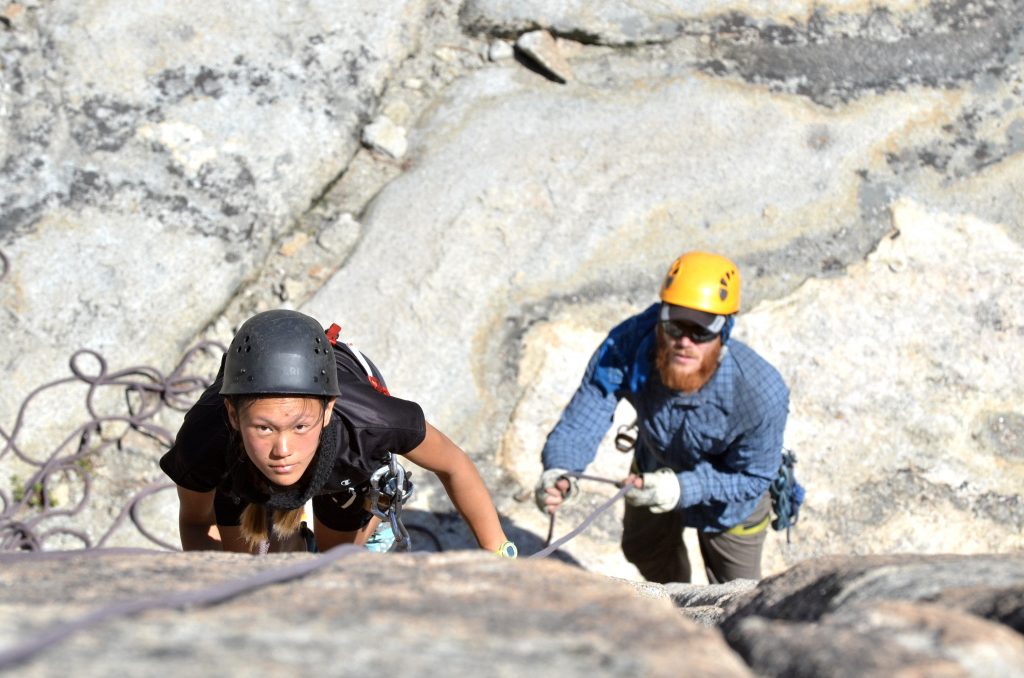In her book Rising Strong, researcher Brené Brown observes that a “tolerance for discomfort” is the common denominator between resilient people.
Exercises provided below are aimed at improving your mental and physical tolerance for discomfort. First, let’s take a look at why discomfort is important for building a resilient mindset.
The Key Word is Mental
If you want to be more resilient, then it’s time to learn to love hardship. David Goggins, Navy SEAL and ultra-endurance athlete, describes this process as callusing your mind. In his book, Can’t Hurt Me, Goggins describes losing 106 pounds in less than three months so he could try out for the SEALs before he aged out. Then he shares how he ran his first 100-mile race without prior training. Oh, and how he ran the Las Vegas Marathon on broken feet.
The man has been described as the toughest man on Earth. His secret?
Knowing that the mental blocks stopping you from achieving your goals are just that: mental.
David Goggins was horrifically abused as a child. He lived in constant poverty, was a terrible student, never went to college and ended up working as a night shift exterminator weighing 300-pounds. He had every excuse to live the crushing existence in which he found himself by his late twenties. But then he stopped making excuses. He embraced discomfort. In fact, he welcomed it. He put down the chocolate milkshakes, started waking up at 4:30 am, exercised virtually every minute of the day and studied while running and biking. He didn’t take “no” for an answer.
Goggins believes that resilience is superior to motivation. Motivation is a flash in the pan, a spark that can ignite action. But just as soon as it appears, it disappears. Resilience is taking action day after day, even when the voices around you and the voice inside you are telling you to quit.
But how can we recognize these voices and move past them?

A resilient mindset means taking action day after day, even when the voices around you and the voice inside you are telling you to quit.
1. Eat More Bitter
Shaolin Monks, masters of Chinese Kung Fu, often describe someone dedicated to intense regimented practice as “one who is not afraid to eat bitter.”
Here are a few exercises to help you “eat bitter” and increase your threshold for discomfort while increasing your resilience over time:
- Take cold showers
- Meditate
- Speak in front of others
- Learn an art and share your work with the public
- Do what scares you, like taking an Outward Bound course to learn new skills in a new environment
Create your own exercises and don’t shy away from what will be truly hard for you.

Do something you know will be a challenge for you. Create your own exercises and don’t shy away from what will be truly hard for you.
2. Be Mindful of Your Thoughts
We tend to place a lot of weight on our thoughts. Sometimes they can fully halt progress. A first step in overcoming self-limitation is to notice and be mindful of these thoughts.
Have you ever wanted to start something new like learn an instrument, play a new sport or even start up your own business? At first the idea is tantalizing, but just when you’re about to start, a thousand excuses come to mind to persuade you from trying—you won’t have enough time, you’re not talented, you will fail.
Moving past them, while not easy, can be accomplished by observing their true nature.
Pay attention to how often your thoughts change. Chances are, many excuses for you to stop will appear. Remember that they’re simply passing thoughts, tiny electro-chemical reactions in the brain trying to get you to stop suffering and get back to comfort.
Watch as they fade and new thoughts take their place.
Noticing and challenging your thoughts is an important part of resilience training. When you drop the unnecessary mental anguish caused by thoughts run amok, problems don’t seem so earth-shattering.

Observing your thoughts is an important part of resilience training. Writing in a journal every day can help you observe them.
Ways to improve your ability to notice and challenge thoughts:
- Regular mindfulness practice
- Therapy
- Sharing fears and worries with a close friend
- Daily journaling
3. Be Vulnerable
It may seem strange to equate vulnerability with resilience. In fact, based on their definitions, doesn’t resilience line up better with invulnerability?
Humans are not invulnerable. We can’t go through life without be rocked to the core by the trials and tribulations of the world. We can, however, be resilient to them.
One of the best methods is to recognize that we all suffer and that we all need each other to get through life. In fact, the word compassion comes from a Latin root, “to suffer with.”
Humans are social beings. Our ancient ancestors wouldn’t have survived had it not been for their ability to work as a team. Because of this, the fear of being ostracized is a real and primal fear. Dr. Brown describes your ability to face that fear as your greatest tool for staying resilient. Are you willing to:
- Call an acquaintance undergoing a personal tragedy, even when you don’t know what to say?
- Speak up about what you need in your personal relationships?
- Put your reputation on the line and publish your work, even when you’re sure everyone will laugh at you?
- Get out and try something you’ve always wanted to do, even if you ‘risk looking like a fool?’
Life is hard, but you can be harder. Be brave. By increasing your capacity for discomfort, you learn to navigate life’s storms all the better.

By increasing your capacity for discomfort, you learn to navigate life’s storms all the better.
The more often you overcome your struggles, the more you’ll believe in your ability to do so in the future. Turning a hardship into an opportunity to overcome it improves your ability to do so in the future, especially at times when a deep reservoir of resilience is necessary.
About the Author
Christian Vogelgesang has been instructing for the North Carolina Outward Bound School for over two years. His favorite part about the job is watching a crew rise to meet a challenge. When he isn’t instructing, he can be found playing music or playing pranks.




